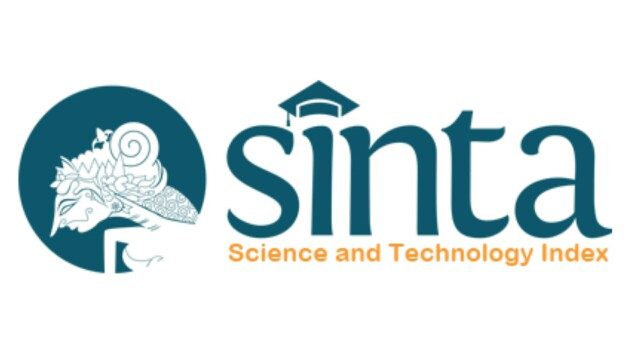SISTEM PENDINGIN PANEL SURYA OTOMATIS UNTUK MENGKATKAN DAYA KELUARAN PANEL SURYA
Abstract
Keywords
Teks Lengkap:
PDFReferensi
K. ESDM, “Rencana Umum Energi Nasional (RUEN),” 2016. [2] Permen, Peraturan Menteri ESDM Nomor 49 Thn 2018 Tentang Penggunaan Sistem Pembangkit Listrik Tenaga Surya Atap oleh Konsumen PT. PLN (Persero). 2018. [3] P. Singh and N. M. Ravindra, “Temperature dependence of solar cell performance—an analysis,” Sol. Energy Mater. Sol. Cells, vol. 101, pp. 36–45, Jun. 2012, doi: 10.1016/j.solmat.2012.02.019. [4] M. Chegaar, A. Hamzaoui, A. Namoda, P. Petit, M. Aillerie, and A. Herguth, “Effect of Illumination Intensity on Solar Cells Parameters,” Energy Procedia, vol. 36, pp. 722–729, 2013, doi: 10.1016/j.egypro.2013.07.084. [5] M. R. Gomaa, W. Hammad, M. Al-Dhaifallah, and H. Rezk, “Performance enhancement of grid-tied PV system through proposed design cooling techniques: An experimental study and comparative analysis,” Sol. Energy, vol. 211, pp. 1110–1127, Nov. 2020, doi: 10.1016/j.solener.2020.10.062. [6] Afriandi, I. Yusuf, and A. Hiendro, “Implementasi Water Cooling System Untuk Menurunkan Temperature Losses Pada Panel Surya,” J. Tek. Elektro Univ. Tanjungpura, vol. 1, no. 2, pp. 3–5, 2017, [Online]. Available: https://jurnal.untan.ac.id/index.php/jteuntan/article/view/21994%0Ahttp://jurnal.untan.ac.id/index.php/jteuntan/article/view/21994/17633. [7] L. Idoko, O. Anaya-Lara, and A. McDonald, “Enhancing PV modules efficiency and power output using multi-concept cooling technique,” Energy Reports, vol. 4, pp. 357–369, 2018, doi: 10.1016/j.egyr.2018.05.004. [8] P. K. Tiyas and M. Widyantoro, “PENGARUH EFEK SUHU TERHADAP KINERJA PANEL SURYA,” J. Tek. Elektro, vol. 9, no. 1, pp. 1–6, 2020. [9] S. A. Zubeer and O. M. Ali, “Performance analysis and electrical production of photovoltaic modules using active cooling system and reflectors,” Ain Shams Eng. J., vol. 12, no. 2, pp. 2009–2016, 2021, doi: 10.1016/j.asej.2020.09.022. [10] F. Grubišić‐Čabo, S. Nižetić, I. Marinić Kragić, and D. Čoko, “Further progress in the research of fin‐based passive cooling technique for the free‐standing silicon photovoltaic panels,” Int. J. Energy Res., vol. 43, no. 8, pp. 3475–3495, Jun. 2019, doi: 10.1002/er.4489. [11] S. Nižetić, E. Giama, and A. M. Papadopoulos, “Comprehensive analysis and general economic-environmental evaluation of cooling techniques for photovoltaic panels, Part II: Active cooling techniques,” Energy Convers. Manag., vol. 155, pp. 301–323, Jan. 2018, doi: 10.1016/j.enconman.2017.10.071. [12] M. W. Tian et al., “Energy, exergy and economics study of a solar/thermal panel cooled by nanofluid,” Case Stud. Therm. Eng., vol. 28, p. 101481, 2021, doi: 10.1016/j.csite.2021.101481. [13] M. R. Gomaa, M. Ahmed, and H. Rezk, “Temperature distribution modeling of PV and cooling water PV/T collectors through thin and thick cooling cross-fined channel box,” Energy Reports, vol. 8, pp. 1144–1153, 2022, doi: 10.1016/j.egyr.2021.11.061. [14] B. Ramadhan, Monitoring Pompa Air Tenaga Surya. Tugas Akhir. Jurusan Teknik Elektronika, Politeknik Negeri Cilacap, 2022.
DOI: https://doi.org/10.24176/simet.v14i1.8901
Article Metrics
Refbacks
- Saat ini tidak ada refbacks.
Indexed by:





Simetris : Jurnal Teknik Mesin, Elektro dan Ilmu Komputer is licensed under a Creative Commons Attribution 4.0 International License.
Dedicated to:













